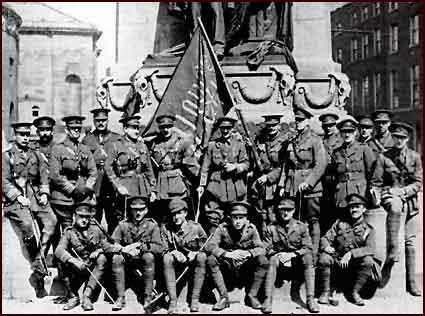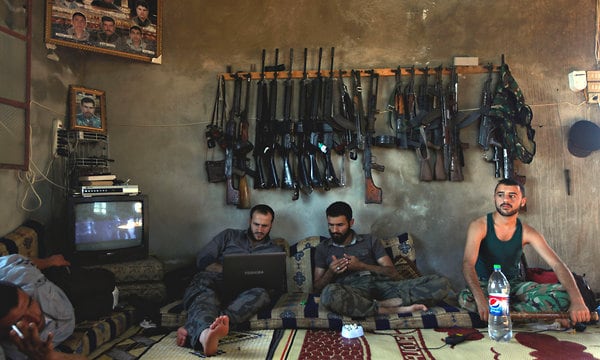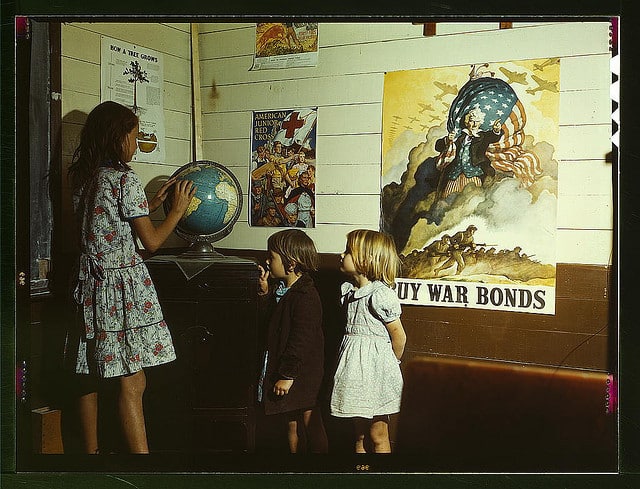Irish Volunteers with the flag of the Irish Republic, Easter 1916. Courtesy of the BBC.
When I set out to begin my DBQ assignment, the scope was wide and the learning rather shallow. I realized fairly early on that I was looking at a yearlong unit rather than an isolated DBQ assignment, and set out to narrow my focus. I settled on the Irish Revolution, often called the Anglo-Irish War, as the subject of my DBQ. The revolution encompassed many of the points I had hoped to make in the larger unit on revolution, so it seemed like a good platform from which to teach. I had wanted to teach students about the relatively transient elements to many revolutions, that they are progressions rather than moments, summations rather than beginnings. The primary skill taught within the lesson would be the reading of primary documents as a means of historical inquiry. Once I narrowed the focus of my DBQ, I found it much easier to teach said skill. Rather than picking and choosing from a vast array of primary documents that, in some way or another, represented a 20th century revolution, the selection of ten images, documents, and artistic renderings of the Irish Revolution allowed for a deeper understanding of revolutionary sentiment at the outset of the 1900’s.
The final project, entitled “The Irish Revolutionary Period,” traces the development of the Irish Revolution from Easter 1916 to the outbreak of the Irish Civil War in 1921 through images and documents. I tried as best I could to limit the contextual history and allow the documents to speak for themselves, though it could be difficult at times. The topic is one I’m very familiar with, so it took a bit of effort to exclude my editorial inclinations. I feel the project is fairly well-rounded, though I would like a chance to supplement the DBQ with some background lessons. I learned that the process of putting together a DBQ can be especially difficult as a teacher, because it requires one to step back and allow the students to connect the dots, rather than doing the work for them. All in all, I’m happy with the product, and its one I’m bound to use in future lessons, wherever I end up teaching.
This DBQ is part of our class-produced, multi-touch iBook. Available free at iTunes





